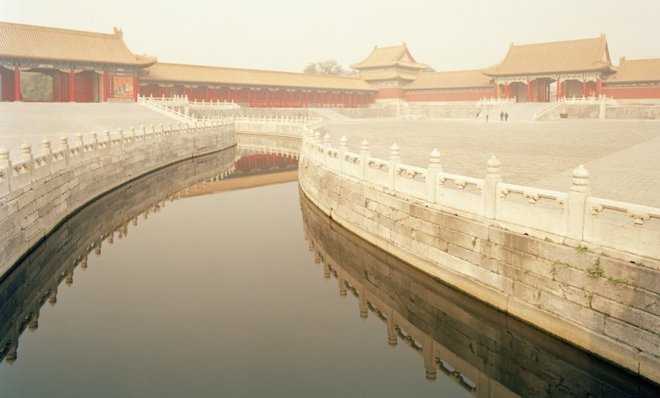What the collapse of the Ming Dynasty can tell us about American decline
Everyone likes to compare the U.S. to Rome, but this 16th century superpower is a far more salient comparison

Ming China was by far the greatest nation on the planet for most of the 15th and 16th centuries. It was certainly the biggest and the richest. Ming technology was in advance of anything in Europe or the Middle East, with movable type, compartmentalized ship hulls, steering rudders, advanced farming techniques, and the ability to solve systems of linear equations. Ming military power conquered Mongolia, subdued Korea and Vietnam, fended off a major invasion from Japan, and quickly disposed of meddlesome raiders from Portugal and the Netherlands. Taxes were low, industry was strong, and the society was peaceful and stable. For almost 300 years, Ming China could — and did — rightfully consider itself the center of the world.
But with the hindsight of history, the Ming doesn't look so awesome. While China was basking in seemingly timeless stability, Europe was seething with new ideas and technological progress. Even as the Chinese government banned oceanic shipping and heavily restricted foreign trade, European countries were discovering the New World and building trading empires. By the time the Ming fell in the 17th century, Europe was well on the way to dominating the world.
The stagnation of the Ming may carry important lessons for a more modern superpower: The United States. We too are a huge, rich, powerful nation that for much of our history has dominated the field of competitors. We too have a whole century of dominance — the 20th — under our belt. And if there's one thing we don't want to do, it's turn into the Ming.
The Week
Escape your echo chamber. Get the facts behind the news, plus analysis from multiple perspectives.

Sign up for The Week's Free Newsletters
From our morning news briefing to a weekly Good News Newsletter, get the best of The Week delivered directly to your inbox.
From our morning news briefing to a weekly Good News Newsletter, get the best of The Week delivered directly to your inbox.
One big reason the Ming stagnated was probably isolationism; the Ming government periodically banned private shipping, burning privately owned ships and forcibly relocating coastal populations away from the sea. Though the policy was ostensibly to curb piracy (which it failed to do), the Ming shipping ban was part of a larger policy of hostility toward trade and foreign travel that grew over time and carried over into the later Qing dynasty.
The United States is hardly isolationist. But as a large country that is geographically isolated from most of the populated world, we need to be vigilant against turning inward. The anti-immigrant sentiment that has grown in recent years is a bad sign. Americans are notorious for not speaking any foreign language, and only 30 percent of Americans have passports. Plenty of foreigners come to study in America's famous universities, but an inevitable downside is that few Americans study in foreign countries. Simply put, we need to get out more.
Part of the Ming's inward-looking worldview was the tendency of Chinese people to see China as the entire world. European maps of the time depicted Europe as the tiny peninsula of Eurasia that it really is; Chinese "world" maps, by contrast, were almost entirely China, with a few outlying areas at the periphery. That's a very unhealthy attitude to have, and sadly, many Americans seem to have it. Survey after survey finds that Americans are geographically illiterate.
Another likely reason for the Ming's decline was disrespect of science. Continuing a trend that had begun in earlier dynasties, the Ming education system de-emphasized science and technical studies, and instead forced aspiring bureaucrats to learn "Confucianist" philosophy. When science was taught, it was taught as canonical wisdom, to be accepted instead of questioned and improved. This may be one reason why, by the mid-1500s, China was importing Jesuits from Europe to do astronomy for the imperial court. Technology that had surpassed the world during the earlier T'ang and Sung dynasties had begun to stagnate.
A free daily email with the biggest news stories of the day – and the best features from TheWeek.com
America shows uncomfortable signs of treading this same path. Of course, there is the attempt by conservative groups to halt the teaching of evolution, climate science, and the Big Bang in public schools, but this is just the tip of the iceberg. Americans are turning away en masse from science, technology, and mathematics fields. We tell ourselves "I'm just not a math person," conveniently avoiding the hard mental work that Europeans and Asians take for granted. Our world-beating universities and tech companies now import huge percentages of their Ph.D. students and engineers, much as Ming China once imported Jesuit mathematicians. The worst part is that after their degrees are finished, many of those Ph.D. students leave America, due to our restrictive immigration system.
In the meantime, Americans are spending less of our GDP on research and development than our counterparts in East Asia and North Europe. And we have allowed our patent system, originally designed to protect and encourage invention, to expand until it is probably stifling innovation overall.
Why did the Ming allow itself to become isolationist, stagnant, and backward-looking? Historians are divided, but the leading explanation is what historian Ian Morris calls the "paradox of development," and Mark Elvin calls the "high-level equilibrium trap." Simply put, when a country thinks it's in a golden age, it stops focusing on progress.
America shows signs of falling into this trap. We tell ourselves robotically that we have "the best health-care system in the world," when in fact it underperforms most other rich countries. We gape and gawk when we first travel to Japan or Switzerland and find that all the trains run perfectly on time — not to mention the fact that there are trains in the first place. We ignore our sky-high infrastructure costs and grumble about potholed roads, never pausing to wonder why West Europe and East Asia don't have these problems. We tell ourselves that we're the "land of the free," ignoring the fact that in Japan you can drink a beer in the park without getting arrested. We say that anyone in America can get rich, ignoring the fact that economic mobility is lower here than in almost any other rich country.
The fact is, America had an extraordinary run of success in the 20th century. We got used to thinking of our country as The Future, as No. 1, as the place where everything happens. But other countries have been racing to catch up with us, and in some ways they have already succeeded. We need to get out of our bubble and recognize the innovations other countries have achieved, and reform our institutions in order to keep up. Otherwise, we risk becoming a stagnant superpower. "Ming America" must be avoided at all costs.
Noah Smith is an assistant professor of finance at Stony Brook University. He blogs at Noahpinion.


